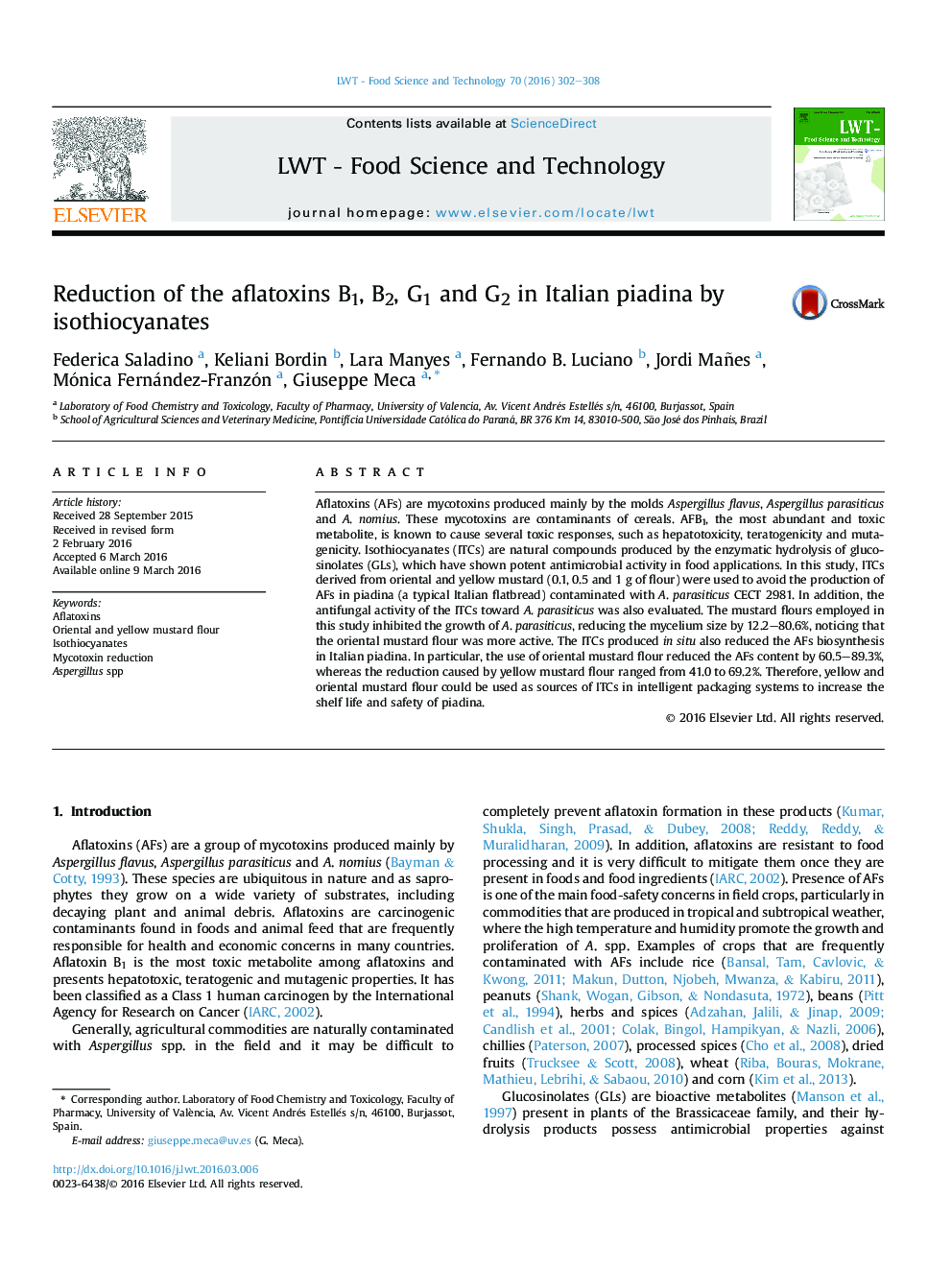| کد مقاله | کد نشریه | سال انتشار | مقاله انگلیسی | نسخه تمام متن |
|---|---|---|---|---|
| 4563599 | 1628527 | 2016 | 7 صفحه PDF | دانلود رایگان |

• GLCs analysis in oriental and yellow mustard flours (46.04 and 78.25 g/Kg, respectively).
• Effect of AITC on Aspergillus parasiticus (mycelium size reduction from 12 to 80%).
• Aflatoxins reduction on the Italian “piadina” ranged from 41 to 89%.
Aflatoxins (AFs) are mycotoxins produced mainly by the molds Aspergillus flavus, Aspergillus parasiticus and A. nomius. These mycotoxins are contaminants of cereals. AFB1, the most abundant and toxic metabolite, is known to cause several toxic responses, such as hepatotoxicity, teratogenicity and mutagenicity. Isothiocyanates (ITCs) are natural compounds produced by the enzymatic hydrolysis of glucosinolates (GLs), which have shown potent antimicrobial activity in food applications. In this study, ITCs derived from oriental and yellow mustard (0.1, 0.5 and 1 g of flour) were used to avoid the production of AFs in piadina (a typical Italian flatbread) contaminated with A. parasiticus CECT 2981. In addition, the antifungal activity of the ITCs toward A. parasiticus was also evaluated. The mustard flours employed in this study inhibited the growth of A. parasiticus, reducing the mycelium size by 12.2–80.6%, noticing that the oriental mustard flour was more active. The ITCs produced in situ also reduced the AFs biosynthesis in Italian piadina. In particular, the use of oriental mustard flour reduced the AFs content by 60.5–89.3%, whereas the reduction caused by yellow mustard flour ranged from 41.0 to 69.2%. Therefore, yellow and oriental mustard flour could be used as sources of ITCs in intelligent packaging systems to increase the shelf life and safety of piadina.
Journal: LWT - Food Science and Technology - Volume 70, July 2016, Pages 302–308